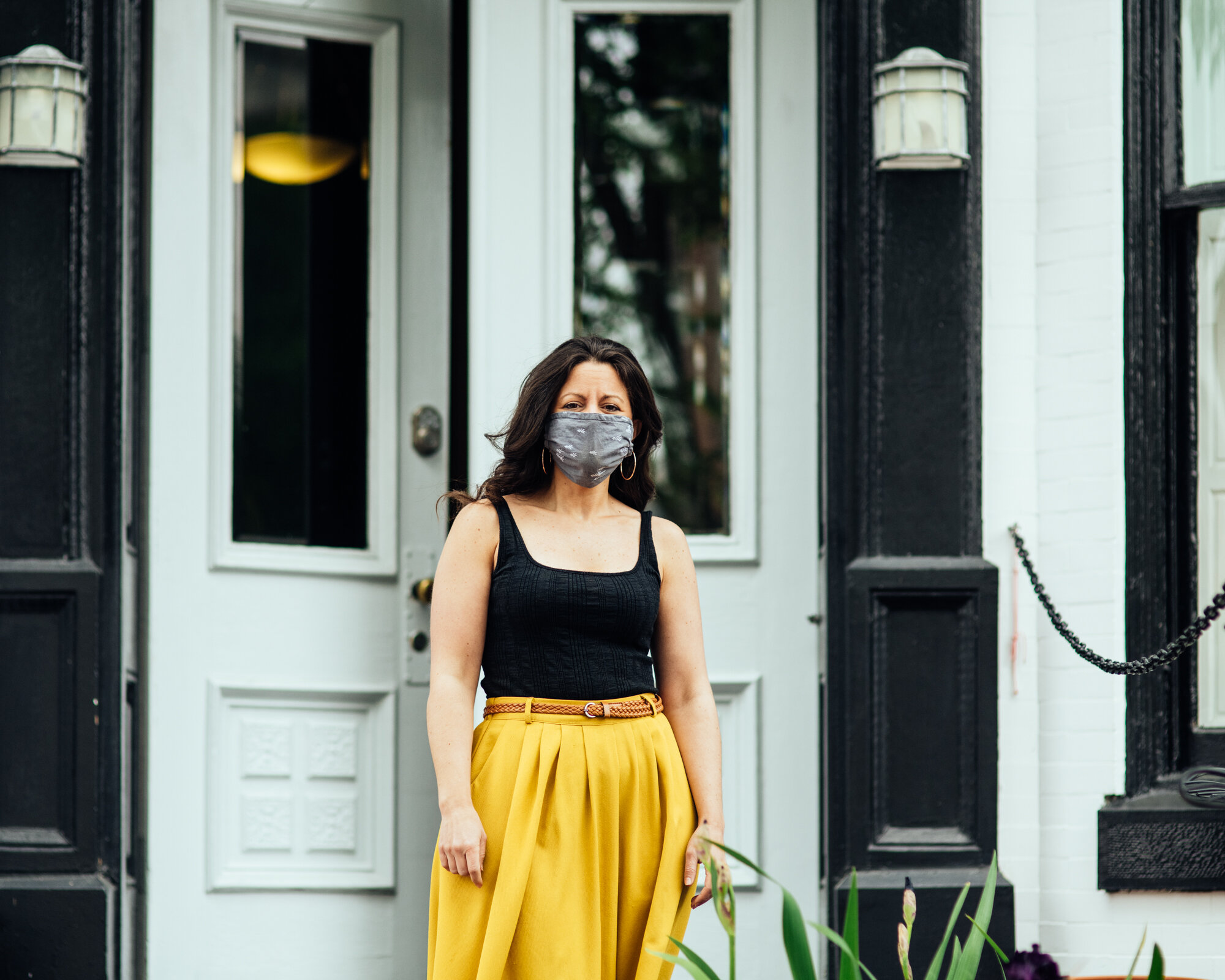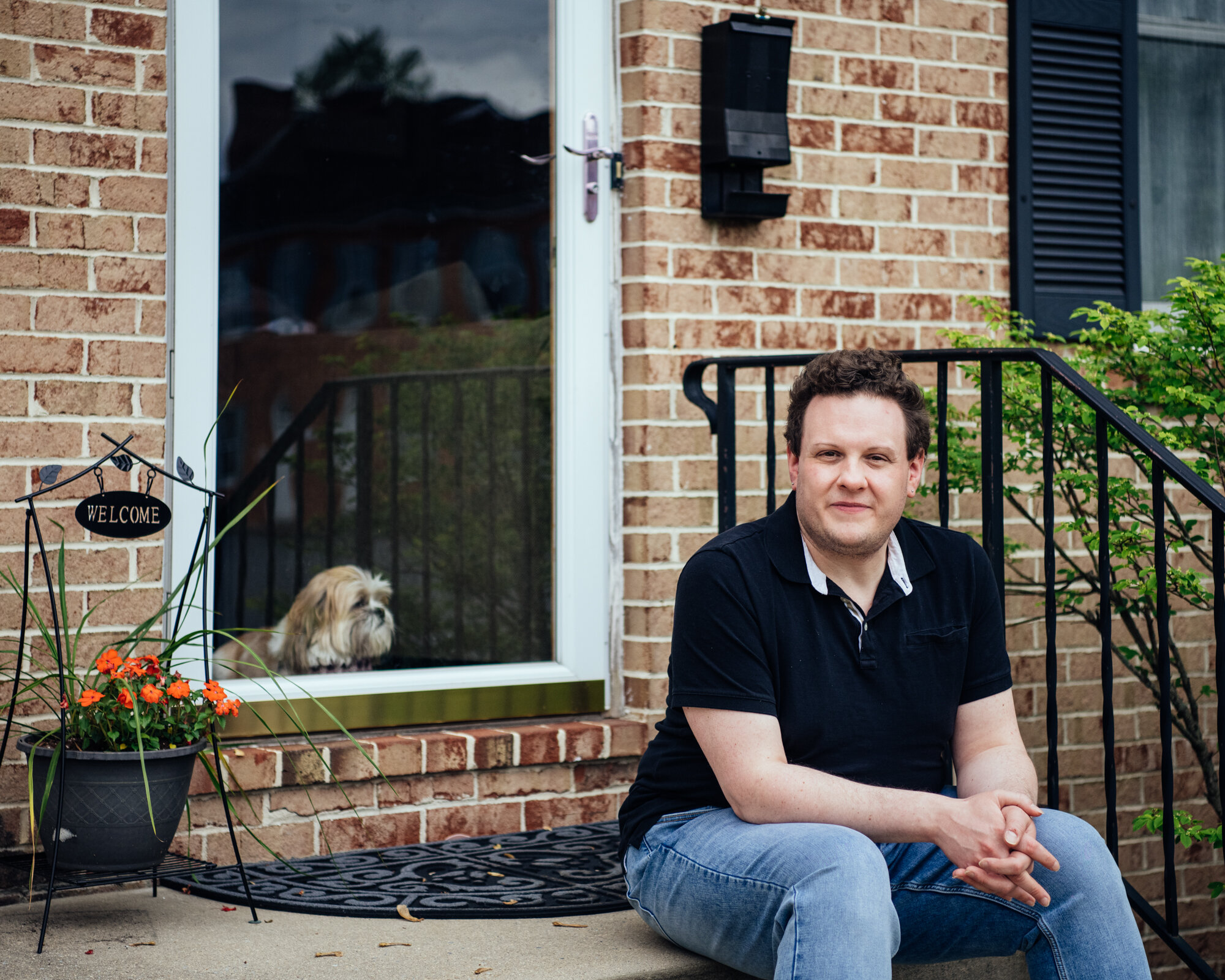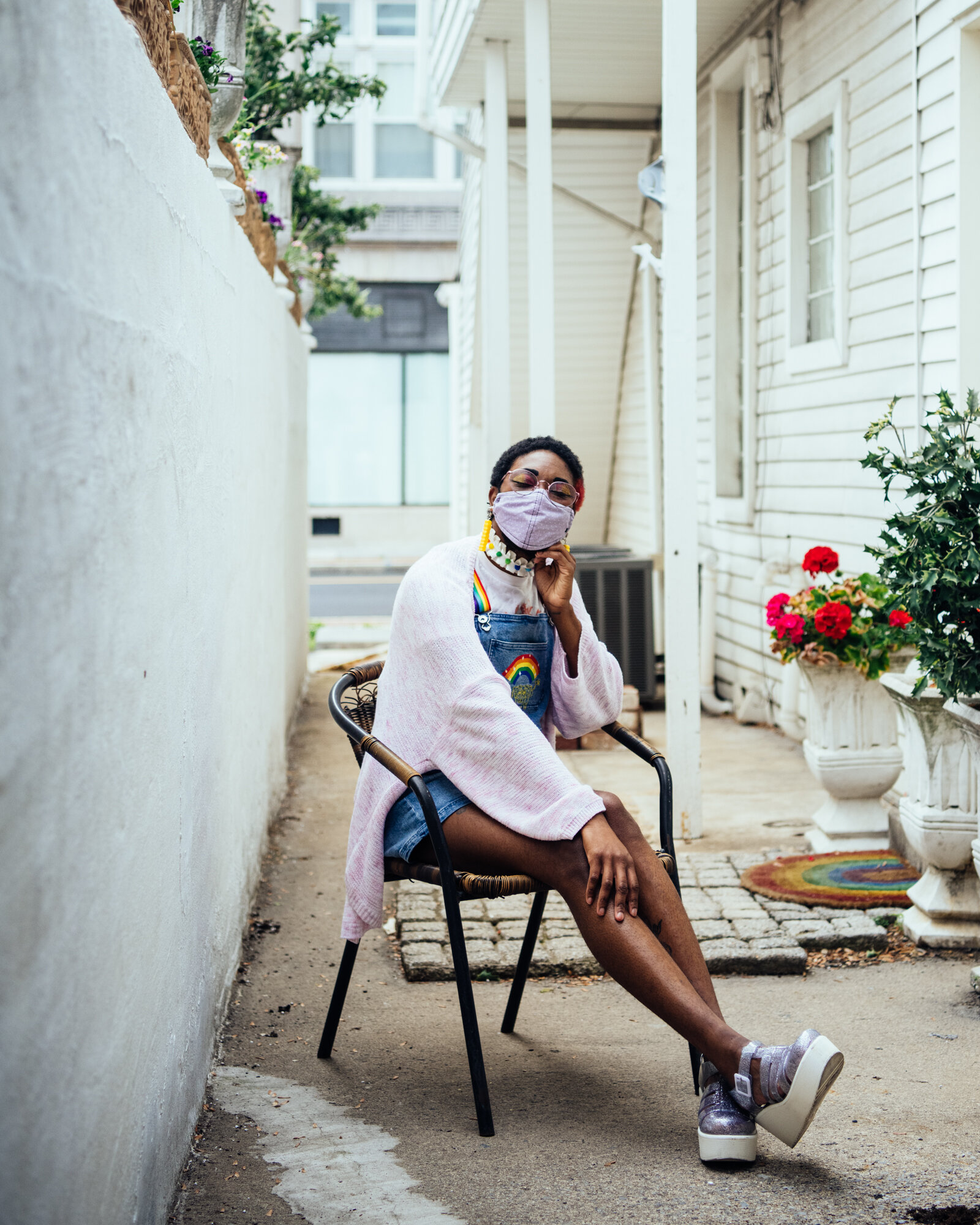Artists in Place for The BURG
May, 2020
Lives have been changed through the pandemic, and it’s difficult to reflect on what that really means right now, while still experiencing what will surely ‘ripple for decades.’ But through the intersection of creative practice and community politic, area artists are adapting and creating and coping.
Ryan Spahr
Ryan Spahr opened the back gate and started clearing toys from view of the sidewalk. Their partner, Morgan, wrangled the younger of their two kids, who was blazing through the back door with a squirt gun. Shelter in place, it seems, is a particular flavor of challenging when you have kids.
“I’m not really making any art,” Ryan says.
Truthfully though, they have still been able to squeeze out a few pieces: a series of 21st Century Gibson Girls, “erotic frog art” for a friend’s book project, a few #quarantinedrawingchallenge pieces, a new label for Elementary Coffee, and a few other ongoing projects. But they’re just used to doing so much more.
Ryan has been baking copious amounts of bread, though. It’s a tactile outlet since they can’t carve out a lot of studio time. With their partner still working full time and the kids not in school, Ryan can have their hands in making bread and still be able to engage as a parent. It’s also their way to seize the means of production and cut out industrial yeast. Ryan’s even made a few loaves for other folks and jests that they’re starting a mega-micro-bakery.
Jovana Sarver
Jovana Sarver’s usual projects have been sidelined during the pandemic: drawing, DJing, creating live multimedia installations and other art. She’s also no longer working at Rubicon as a server. But—while being mindful of frugality—for the first time in her life, she actually has the time to really explore what kind of medium she wants to focus on.
.
Dyeing fabric was something that she started doing before stay-at-home orders, but now she’s fully immersed. She’s been foraging lichen on the Greenbelt to test and develop dyes, working with indigo, ice dyes and Cochineal dyes. There is a long line of vibrant pieces hanging between the blooming trees in her backyard.
.
She’s a bit conflicted at times—the weight of this time is undeniable, and she still experiences moments of despair, but over all, sheltering in place has given her the opportunity to re-center and discover.
Caitlin Graci
Caitlin Graci sat perched on the stoop outside of her downtown apartment with a cup of coffee.
Bare Bones Theatre Ensemble, the theater company of which she is the founder and artistic director, is in a unique position compared to other theater companies. They don’t have to worry about the strain a physical space incurs during the pandemic’s economic burden. But, even so, live performance theatre will be drastically impacted for the foreseeable future and perhaps years to come.
Companies of actors will have to stay small and, for now, live audiences cannot exist. Caitlin is patiently moving forward with table readings over Zoom calls, virtual meetings for her company to check in with each other, plans for plays and musicals with two- to six-person casts, and bouncing around new ideas to bring shows to life.
The dramatic shift in dynamic of performance is both devastating and exciting for Caitlin. She’s excited to rise to the challenge and problem-solve logistics, think outside the box, as Bare Bones has been known to do. But it is also apropos to mourn the loss of the live audience. Part of the magic of theater is the sync of heartbeats and the shared experience.
Tristan Bond
Tristan Bond has been a massage therapist at Hershey Spa for 11 years, but, like many businesses, the spa has been closed since mid-March. He’s trying to be mindful of not procrastinating with ample free time. Activation comes and goes, but, when his hands are busy, the ideas are fluid. Keeping his brain and body active are instrumental to maintaining creative flow.
He’s been working on concepts for two murals in Midtown and feeling grateful that the pandemic hasn’t tabled the projects. Tristan is a little worried that there might be complications ordering supplies right now, but they will be his first murals painting directly on a wall instead of using parachute cloth, and he loves the prospect of growing as a muralist.
Tristan is also glowing more than usual. He’s going to be a dad soon, and, pandemic be damned, he is so excited.
Hanniel Sindelar
Hanniel Sindelar lounges on the green patio furniture at the base of the deck covered with manicured, potted plants and a small antique clown statue. It’s a stark comparison to seeing Hanniel in their drag character, Mister Treats.
The loss of work and the shelter-in-place have presented a range of challenges for the freelance artist and Sundae Best co-founder and artistic director. With theater shows and costume design projects on hiatus during this time, all of Hanniel’s focus has shifted to safely moving Sundae Best and Fruit Boots, the monthly punk drag show, to virtual platforms, creating video drag and burlesque performances, exploring those characters deeper, pinup photography and mask making. All of these things simultaneously lend to giving care to themself, their partner, their drag family and wider community during the time of crisis.
Felicia O’Toole
The drag artist and Sundae Best co-founder Michael Tschop, more widely known as Felicia O’Toole, was used to performing eight to 10 drag performances a month. Weekends have been especially difficult. Losing physical proximity to their community as well as the live gigs felt like a sucker punch to the gut. But drag is still a labor of love. Felicia is a curious dive into their extroverted self, and a little bit of reinventing through video performance has resulted in some wildly entertaining “How To” videos.
They’ve helped quickly transition Sundae Best and Fruit Boots to a virtual platform with co-host, Mister Treats, as well as moving their solo event, “Boozy Bingo” at Zeroday to an online, weekly event instead of monthly. It’s giving them and folks who tune in something to look forward to on Thursday nights.
Phil Wells
Phil Wells lost some projects due to the economic hardship of the small businesses that usually contract him, especially restaurants and small retail shops. But he feels fortunate to have picked up a couple of projects as places like Little Amps transitioned for modified service. They hired him to make a hand-painted sign and to modify a coffee cart previously intended for Troegs, which will now live at the downtown shop on State Street.
He’s had a bit more time to draw, sketch custom furniture designs, and work in the garden.
Walking through the gate of Phil’s house feels like walking into some kind of city garden oasis. The side of the house has been tilled into beds of lettuce, arugula, peppers, tomatoes, peas and an alphabet of other vegetables and produce.
Community connectivity was always incredibly important to Phil and his partner, Kate. They were already planning on doing what he calls a “homestead style” vegetable garden, but, with the looming pandemic, they expedited a lot of the work this spring with intentions to produce high yield—much more than they need. He hopes that the crisis opens up more discussion on solving issues of food insecurity here in Harrisburg.
Gabe Taylor
Gabe Taylor is the youth programs coordinator at the LGBT Center and GLO, as well as a Sundae Best drag performer named “Baby Flamingo.” They also float between other artistic expressions—photography, jewelry making, music—but hate calling themself “an artist.” Something about the label feels confining.
Video drag performance was never something that really interested Gabe, but creating video performance for the virtual Fruit Boots event meant they could use music that would have otherwise proven difficult in a live setting and find deeper latitude with their drag character.
As someone who is mindful about inclusion in organizing, they noticed that the way mediums have evolved into virtual events opens accessibility for disabled folks who previously were unable to participate. Access that was denied because it was not necessary for the larger group is now essential for the survival of not just art and performance, but a massive range of events. Realizing this moment is crucial to remembering to keep that access open as the community gradually moves out of shelter in place.
Garrick Dorsett
Garrick Dorsett leans back in the chair on his front porch in Camp Hill and jokes that he is the mayor of the porch. It’s almost the time of day when the neighborhood folks stroll by his house to walk their dogs. He’s been spending a lot of time out there.
Garrick is the coordinator of the graphic/interactive design and photography program at HACC, and he’s had to finish teaching this semester’s studio photography course over Zoom. He has sorely missed his classroom and workspace through shelter in place. His artwork is a steady consciousness stream of two-dimensional lines, a kind of haptic discovery that thrives in the energy of the academic environment that he leads.
“It’s really hard for me to say I’m not making anything.”
He’s referring to his usual studio practice, but, in the next breath, tells me he’s been whittling walking sticks for folks he knows, knife handles, and a slingshot to feed peanuts to the squirrels in his yard. “I don’t know, I just really love straight sticks,” he laughs.


















